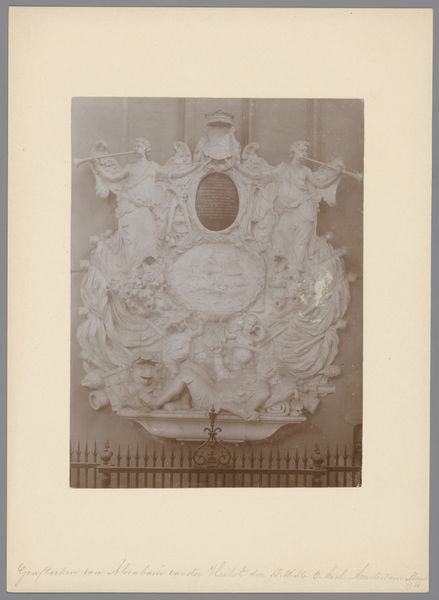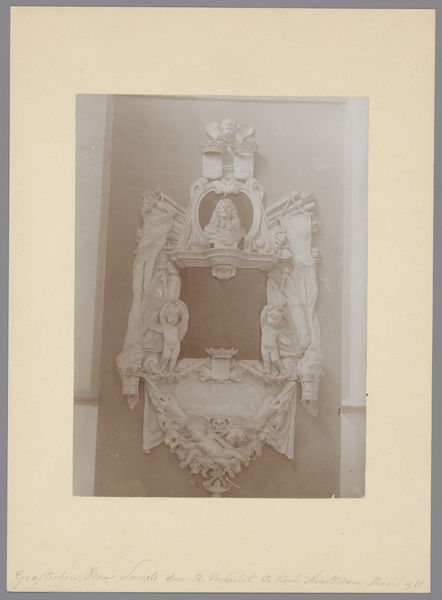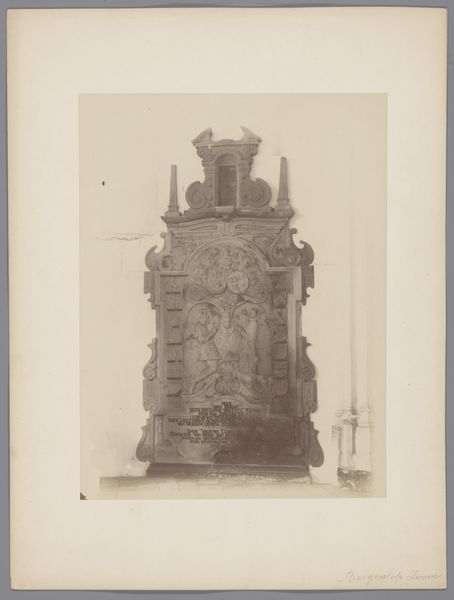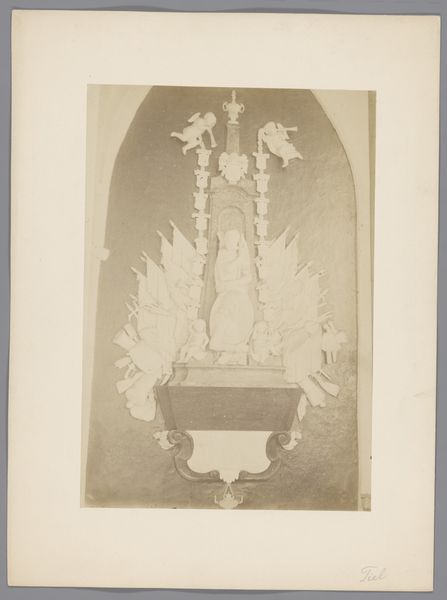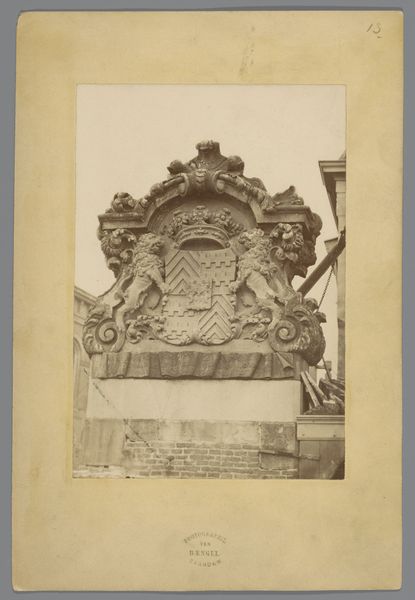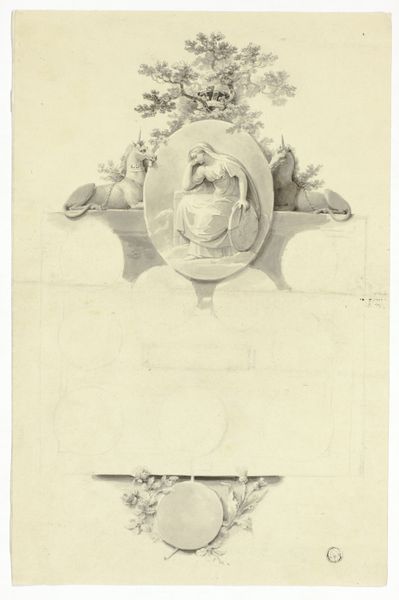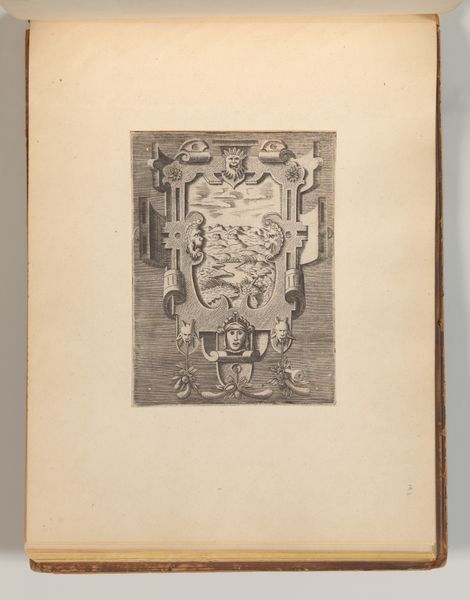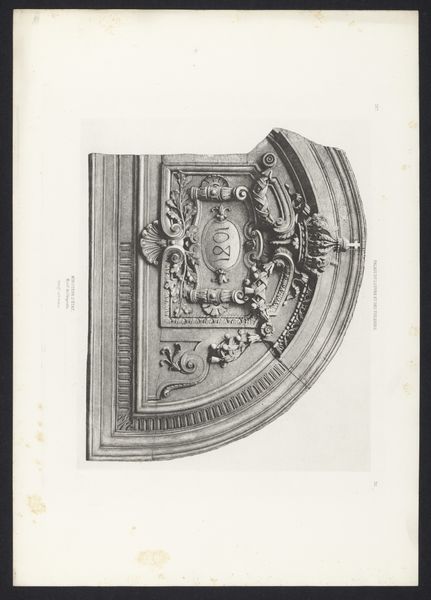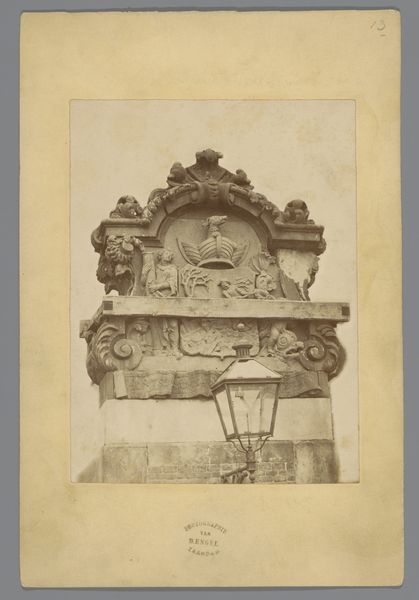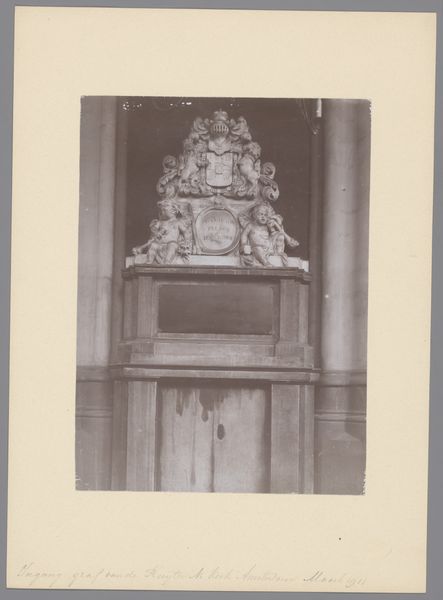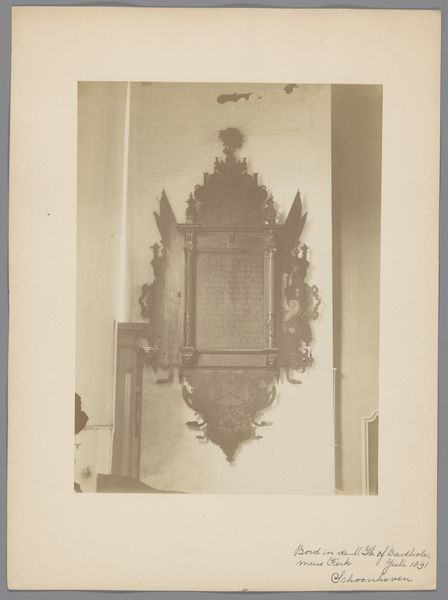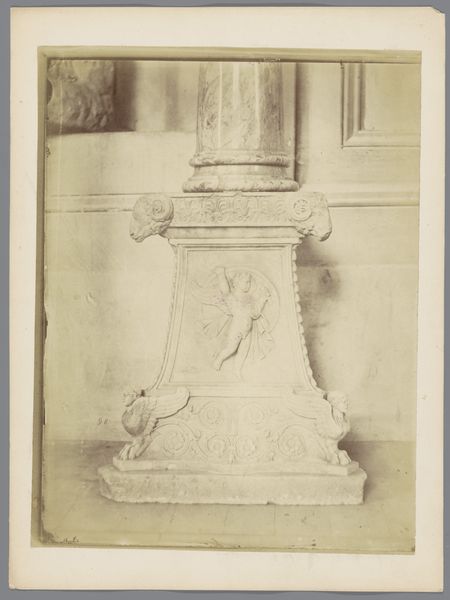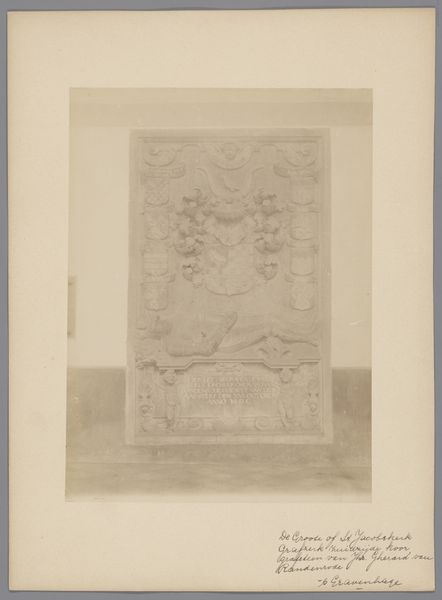
Grafteken van Willem van der Zaan door Rombout Verhulst in de Oude Kerk te Amsterdam 1911
0:00
0:00
Dimensions: height 217 mm, width 148 mm
Copyright: Rijks Museum: Open Domain
This is a photograph of the tomb of Willem van der Zaan, made by Rombout Verhulst in the Oude Kerk in Amsterdam. Looking at this image, we can see the visual language that was used to create meaning around death, memory, and social status in the Dutch Golden Age. During this time, Amsterdam was a major center of global trade and culture, and the Oude Kerk served as a significant public space. A monument such as this one was a way of asserting the importance of certain families within the social structure of the city. Verhulst was one of the most sought-after sculptors of his day, and he was employed to create tombs and monuments for many important Dutch figures. Art historians consult church and municipal archives, genealogical records, and period publications in order to understand the context in which such objects were made. Ultimately, the meaning of this artwork is dependent on the social and institutional context in which it was created and displayed.
Comments
No comments
Be the first to comment and join the conversation on the ultimate creative platform.
